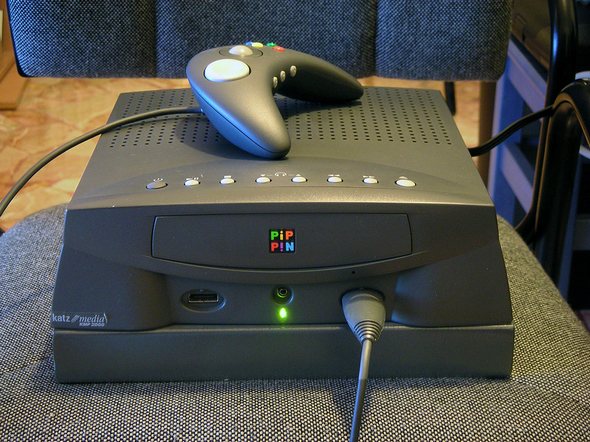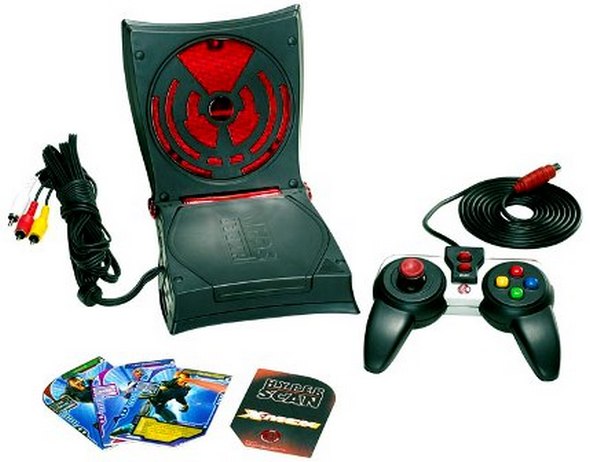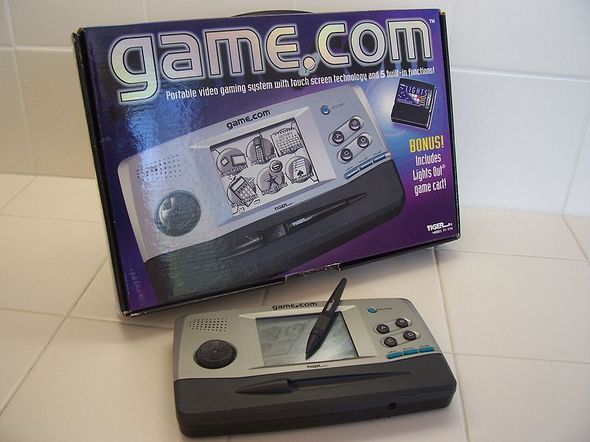Even if you’re not a video game fan you probably know what a Wii, Xbox or Playstation looks like, since they’re all hugely successful and highly recognisable products. But their success has been built on the backs of dozens of failed attempts at entering the video game market, and when so many consoles come and go it’s inevitable that some of them will be both much stranger, and much bigger failures, than all of the rest.
1.
Apple Bandai Pippin
Yes, Apple made a video game console, but it was back in 1995, well before they started putting i in front of most of their products and were instead making crap like the Apple Newton. They partnered up with Japanese toy giant Bandai, and together this dream team produced an overpriced machine that the world ignored. Apple and Bandai tried to market it as a cheap computer, but consumers were smart enough to instead recognise it as an expensive video game console, and one that was inferior to others available at the time.

Only 42,000 units were sold, and while it was hardly the first video game console to fail it was rare to see two huge companies team up to produce something so awful. It wasn’t as powerful as its rivals, despite costing much more, and very few games were released for it. Strangely enough, Apple continues to take the underpowered and overpriced approach to their products today and everything they create is a huge success. Maybe it’s time to announce the Pippin 2?
2.
Mattel Hyperscan
Any product with “hyper” in the name is suspicious, because it sounds like it’s trying too hard to be hip and futuristic. Well, the Hyperscan is no exception, as it blurs the line between legitimate gaming console and gimmicky toy. At least it did, before it died out almost immediately after its release in 2006.

The Hyperscan was targeted at children who were too young for a regular video game console, which would have been a good idea 20 years ago but in the modern day that’s an audience that doesn’t exist. It was cheap and simple, and its games weren’t on cartridges or discs, but instead on cards that were scanned by the machine. Because what says “kid friendly” more than tediously scanning a bunch of cards instead of just plugging something in and playing right away?
The idea was to sell additional cards that would give players upgrades to their games, which would have been a devious plan to rake in the profits if anybody had actually bought the thing. No matter how hyper the scanning was kids just stuck with regular consoles, relegating this strange machine to the ever growing pile of products that have failed to amuse children. Picky bastards.
3.
Tiger game.com
No, game.com isn’t a website. Well, it is, but it has nothing to do with this 1997 handheld console from Tiger Electronics. We’re not sure how they came up with such an awful name, but that was the least of its problems.
To be fair, it had some pretty good ideas for the late 90s, like a touch screen, PDA functions and an Internet connection. All you had to do was plug the thing into a phone jack and pay a monthly fee, then you could surf the web in black and white at the blistering speed of 14.4 kilobits a second. Convenient!

Features like that were supposed to appeal to an older target audience, but apparently nobody informed the marketing department because their ads tried and failed miserably to be cool and edgy. Their commercials were intended as satires of the over the top video game ads of the day, but nobody got the joke and so they just came off as absurd and insulting. The ads were more successful at driving people away than they were at making them interested, so it’s no wonder the game.com died out after only a couple of years.







